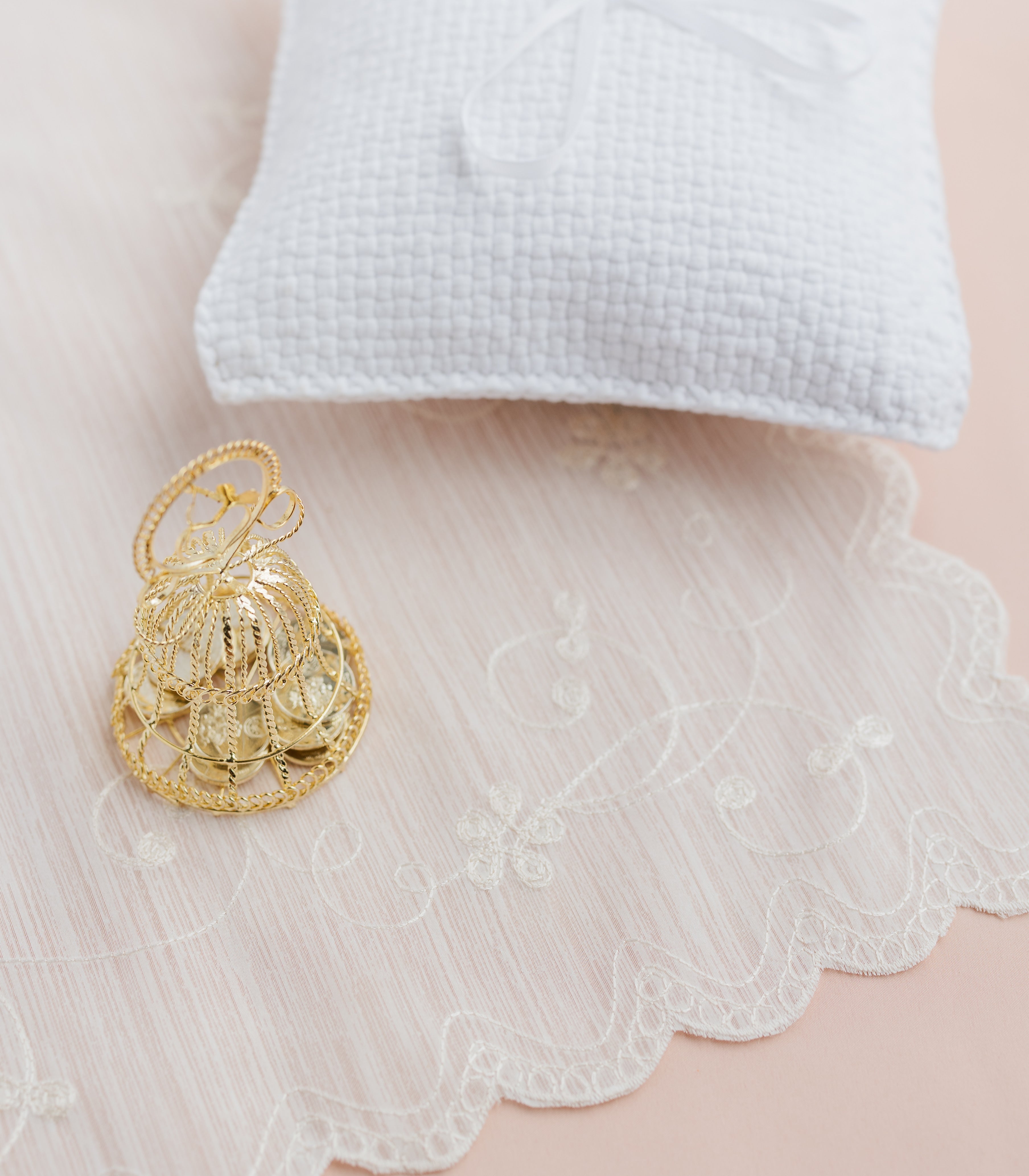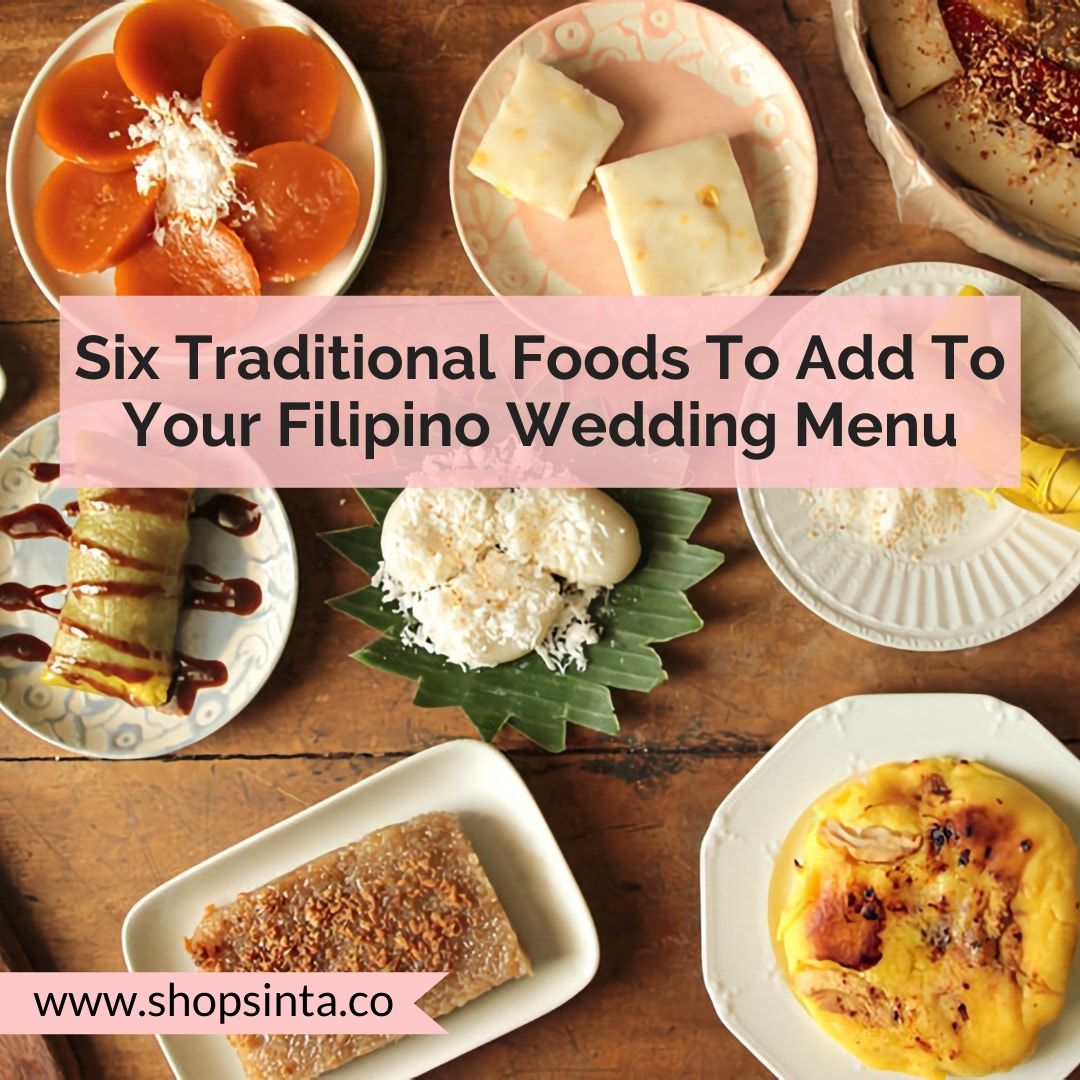Attending a Filipino wedding? Here’s a word of advice: get your tummy ready - and hit the treadmill the day after.
Why? There’ll be mounds of fluffy white rice waiting to be paired with crispy lechon or roast pig, oodles of savory pancit to represent one’s wish for longevity, and sticky and colorful confections that’ll keep you and the kids coming back for seconds.
Indeed, what’s served in Filipinx weddings is arguably as important as what the bride will wear. It’s the experience your guests will remember long after. But what makes the food in Filipino weddings ultimately satisfying, and how do you plan your Filipino wedding menu?
Creating Your Filipino Wedding Menu
Will you serve a purely Filipino menu served on banana leaves and bilaos (round basket trays)? Or mix it up with a roast beef carving station AND fondue fountain? The question has likely popped up among many couples’ plans.
Today, many weddings in the Philippines tend to combine traditional favorites with Western and Asian fare, so you can expect to see a lechon propped up beside a slab of roast beef, or baked tahong (mussels) alongside clam chowder soup. All of it depends on your preferences of course, but a taste of your local heritage will likely keep everyone happy.
As for the question of multi-course or buffet-style service, most Filipinx weddings typically have the latter to have everyone’s satisfaction in mind - Filipinxs do love to eat! That said, it’s not uncommon to also find plated menus divided into different courses.
Typical Filipino Wedding Reception Dishes: A Rundown
1. Lechon

Is it really an occasion without lechon? Unofficially touted as the Philippines’ national dish, lechon is a slow-roasted stuffed pig best known for its crispy browned skin and tender meat flavored by aromatic stuffing.
Varieties of lechon are found all over the archipelago: with ingredients like lemongrass and pili nuts used as stuffing in Lechon Cebu, and green chilis infused with coconut milk in the Bicol region. When ordering from your local lechon supplier, at least 3 days in advance of your event is recommended, with sizes ranging from small (15-20 people) to large (25-30 people).
2. Pancit

While rice is the staple of choice, Filipinxs have always had a fondness for noodles, particularly pancit. Influenced by centuries of Chinese settlement in the Philippines, it symbolizes long life, and is loaded with meat, seafood, and veggies you can tweak to your preferred style. Usually, it comes in variants such as Canton (made with egg noodles), Bihon (rice noodles), and Palabok (rice noodles topped with an orange sauce made of annatto seeds).
Make sure to order more than one batch if you’ve got loads of guests attending your wedding!
3. Rice

In a Filipinx wedding, leaving out the lechon can be an inconvenience. But not having rice? Unimaginable. Overflowing on all special occasions, having an almost unlimited supply is almost expected to counter all the contrasting flavors of the ulam (main dishes). As a word of advice, never run out, or bear the brunt of everyone’s complaints. A plus if you’ve got garlic rice and brown rice for those who want something other than plain.
4. Adobo

Adobo, stripped to its bare-bones essence is your lasting, one-pot wonder. A beloved dish in the Philippines, and probably the most advocated dish to non-Filipinos, it’s usually made with chicken or pork, boiled and simmered in a mixture of vinegar, soy sauce, garlic, bay leaves, and black peppercorn. Back when there was no refrigeration, it was the dish of choice as it can last days without spoiling due to its vinegar base. Today, it remains a favorite during weddings - and is a must-have if you’d like to introduce guests to Filipinx cuisine.
5. Caldereta

A classic Filipino stew, caldereta is always a sure-hit in big gatherings. It combines beef cubes, potatoes, bell peppers, green olives, and cheese, simmering the meat in a spicy liver and tomato sauce until tender. The result? One hearty and slightly creamy dish to give your celebration a sense of cozy, home-cooked delight.
6. Kakanin

Photo credit Riell Santos at Yummy.PH
Filipino desserts are both a gastronomic and visual feast, making use of available ingredients like rice, coconuts, and cane sugar. Many of these can be categorized as kakanin (rice cakes), which transform ordinary malagkit (sticky rice) into colorful creations.
Types of kakanin include the biko (rice topped with a brown sugar-coconut milk mixture), sapin-sapin (a three-layered pudding also flavored with purple yam & jackfruit), and puto (steamed rice cakes topped with strips of cheese or salted egg). When serving kakanin, add a touch of Filipino elegance by placing banana leaves underneath the platter.
In most cases, one can truly expect Filipinx weddings to be full of festive flair, where uptight atmospheres are the exceptions and mingling among tables is the norm. Plenty of couples add their own unique twists too, such as modern Filipinx-Latin desserts (check out Bay Area-based Sweet Condesa!) and the ever-trendy naked wedding cake.
Of course, the menu, cake, and everything else in the Filipinx wedding will still depend on what the couple wants, above all.
Are you planning your Big Day, Filipino-style? Discover quality caterers, dresses, planners, and more in our Wedding Vendor Directory.Lawrence Garcia

Lawrence is a writer and digital creative from Manila, who's passionate about advertising, books, and fashion history. While working on getting certified as a digital marketer, he's usually binge-watching Heartland and RuPaul's Drag Race on Netflix. You can get in touch with him via email at rencegarcia95@gmail.com



Leave a comment